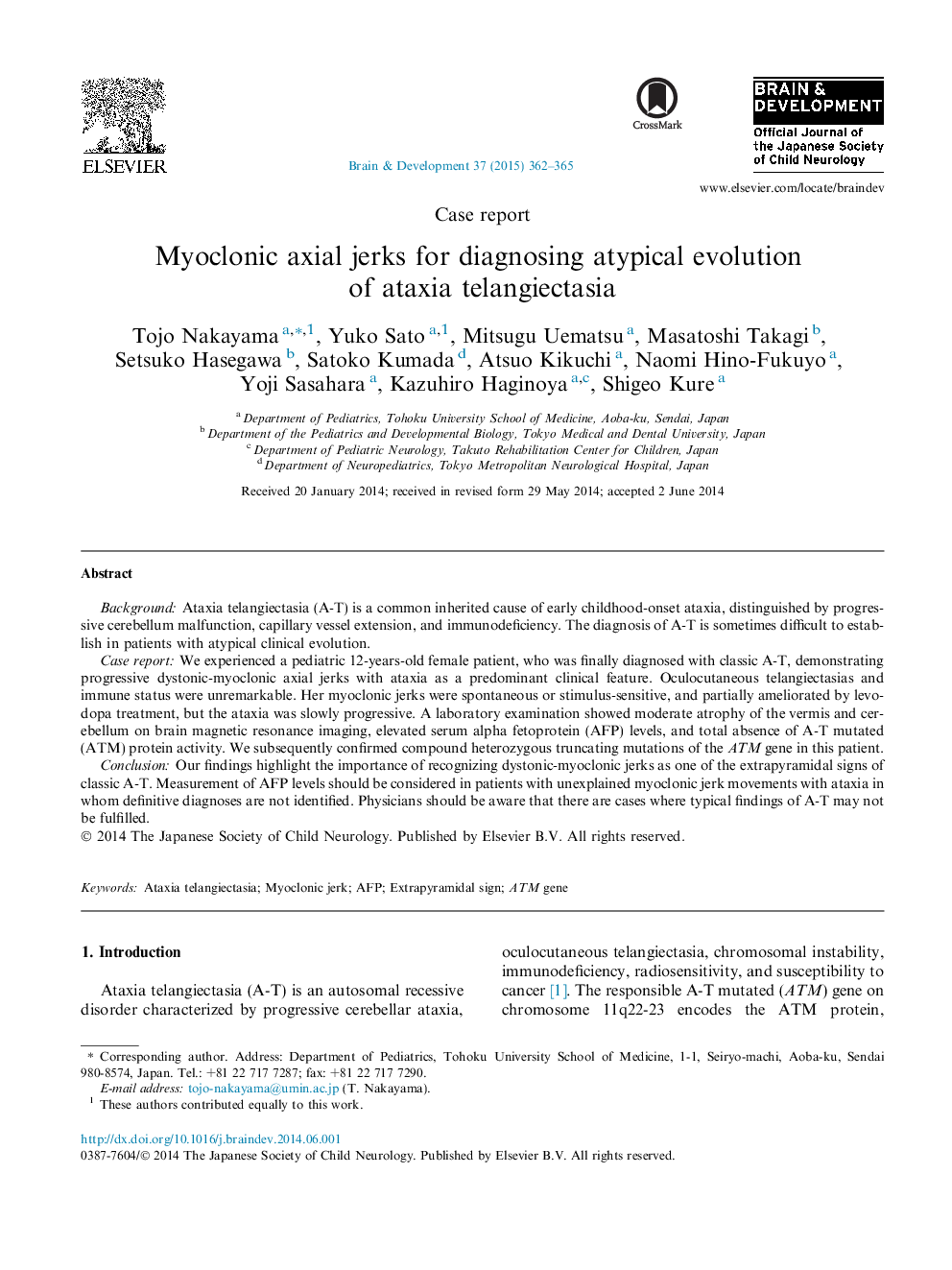| کد مقاله | کد نشریه | سال انتشار | مقاله انگلیسی | نسخه تمام متن |
|---|---|---|---|---|
| 3036793 | 1184384 | 2015 | 4 صفحه PDF | دانلود رایگان |
BackgroundAtaxia telangiectasia (A-T) is a common inherited cause of early childhood-onset ataxia, distinguished by progressive cerebellum malfunction, capillary vessel extension, and immunodeficiency. The diagnosis of A-T is sometimes difficult to establish in patients with atypical clinical evolution.Case reportWe experienced a pediatric 12-years-old female patient, who was finally diagnosed with classic A-T, demonstrating progressive dystonic-myoclonic axial jerks with ataxia as a predominant clinical feature. Oculocutaneous telangiectasias and immune status were unremarkable. Her myoclonic jerks were spontaneous or stimulus-sensitive, and partially ameliorated by levodopa treatment, but the ataxia was slowly progressive. A laboratory examination showed moderate atrophy of the vermis and cerebellum on brain magnetic resonance imaging, elevated serum alpha fetoprotein (AFP) levels, and total absence of A-T mutated (ATM) protein activity. We subsequently confirmed compound heterozygous truncating mutations of the ATM gene in this patient.ConclusionOur findings highlight the importance of recognizing dystonic-myoclonic jerks as one of the extrapyramidal signs of classic A-T. Measurement of AFP levels should be considered in patients with unexplained myoclonic jerk movements with ataxia in whom definitive diagnoses are not identified. Physicians should be aware that there are cases where typical findings of A-T may not be fulfilled.
Journal: Brain and Development - Volume 37, Issue 3, March 2015, Pages 362–365
